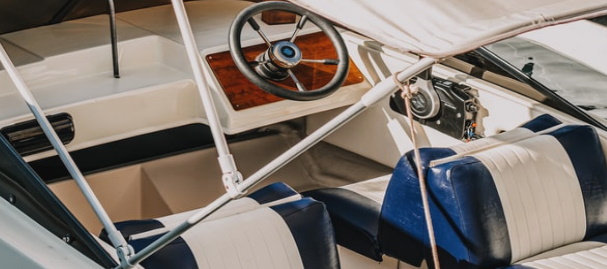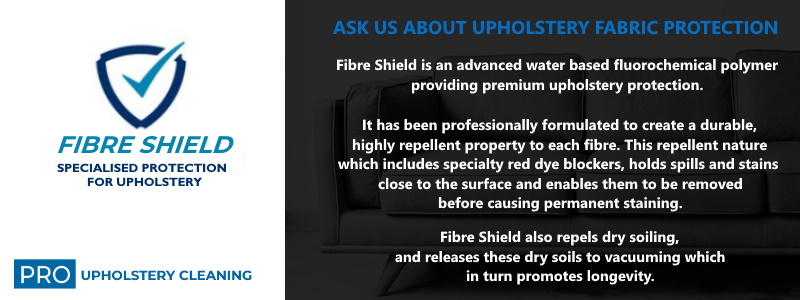Marine Upholstery
Marine upholstery is used for boats, yachts, ships, and other marine vessels. It’s mostly made of vinyl, but marine vinyl is different to other vinyl in that it is moisture proof. Yet, it is simply not the only component in marine upholstery. There are other supporting materials that come into play.
The main material of marine upholstery, vinyl, is a fairly recent invention. Vinyl was invented in the 1920s by Dr. Waldo Semon. It even precedes other waterproof materials like rubber and plastic.
Dr. Semon was a scientist at the now billion-dollar tyre company, BF Goodrich. He was trying to create an adhesive that would help stick metal and rubber to each other.
During this process of trial and error, he created a material known as polyvinyl chloride or PVC. Dr. Semon realised the sheer durability and malleability of this new substance and began experimenting on it. He used PVC to create everything from shoe heels to shock absorbers.
Entry of PVC into Marine Upholstery
Soon, with the scarcity of rubber in WWII, PVC found its way into most industries. By the 1930s, PVC was used for many products like raincoats, electrical wires, and tyres.
PVC was cheap to manufacture, and because of its moisture and heat resistant properties, it became even more popular. Soon, manufacturers developed even more types of PVC that were fully waterproof and fabric-like. Thus, paving its way into marine upholstery.

How is Marine Upholstery Made?
Marine upholstery is made of mostly PVC or blends of PVC, such as expanded vinyl or PVC and vinyl composites.
PVC is made of two essential substances; salt (chlorine) and oil, specifically petroleum oil. The petroleum oil is used to make ethylene by undergoing a process known as "cracking". It is put under high temperatures and pressures until it gives out ethylene.
Next, the chlorine from the salt water is obtained by separating it through a process called electrolytic disassociation. Then through compounding, ethylene and chlorine are systematically combined to get vinyl. Manufacturers can alter the consistency and the texture of the vinyl by changing the ratio of the ingredients.
Materials like polyester and canvas are combined with vinyl to create water-resistant materials. The materials are lined with a vinyl coating to waterproof one side, which makes one side impervious to moisture damage. PVC-coated polyester is made with a material called polyester scrim and PVC. The scrim supports the PVC liquid coating and is sealed together using Radio Frequency welding or hot-air welding.
Canvas composites are becoming increasingly popular options. They are made by coating cotton or nylon with a PVC enamel. Depending on the material of the canvas, PVC is coated onto it using high temperatures.

Characteristics
Waterproof
Something that is often confused are the terms waterproof and water-resistant. One might think the terms are interchangeable; however, they are entirely different.
Being waterproof is when the entire material is invulnerable to water. Materials like PVC upholstery and polyester composites are usually waterproof.
Water resistance, on the other hand, is when water cannot pass through the material easily. Meaning water can damage it if it is exposed long enough. Canvas upholstery is usually water-resistant and not waterproof.
Durable
As marine upholstery provides the two features above, they are also resistant to heat and humidity. And being resistant to moisture prevents the growth of mould and mildew, although it will not entirely prevent it from happening.
It is also secured with industrial-grade glue and sealed with weatherproof sealants. Thus, these ensure that the upholstery stays put for a long time.
Easy To Clean
As PVC is not absorbent, it makes cleaning and maintenance fairly easy. You need not spend much on cleaning agents or instruments. Most PVC marine upholstery is also resistant to stains but accidents will always happen. It’s recommended you get professional marine upholstery cleaning services to take care of everything for you at least once per year.
Popular Uses
Marine upholstery is mainly used for boats, and covers both indoor and outdoor surfaces. It is used to protect these surfaces from the sun and fungal or microbial damage.
Marine upholstery can be made into covers for seats but it can also entirely cover couches, sofas, lounges, chairs, and bench seats. And unlike regular vinyl, marine-grade vinyl is also more durable when it comes to sun exposure.
Marine upholstery is very different from other types of upholstery in that it is not aesthetically based but focused more on practicality. Its primary purpose is to protect surfaces from degradation. Thus, making it essential for any marine vessel. And due to its excellent durable qualities, its uses also extend to any surface that requires waterproofing.
The Best Marine Upholstery
Cleaning Service You Will Ever Try.

